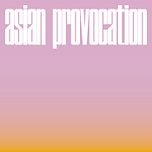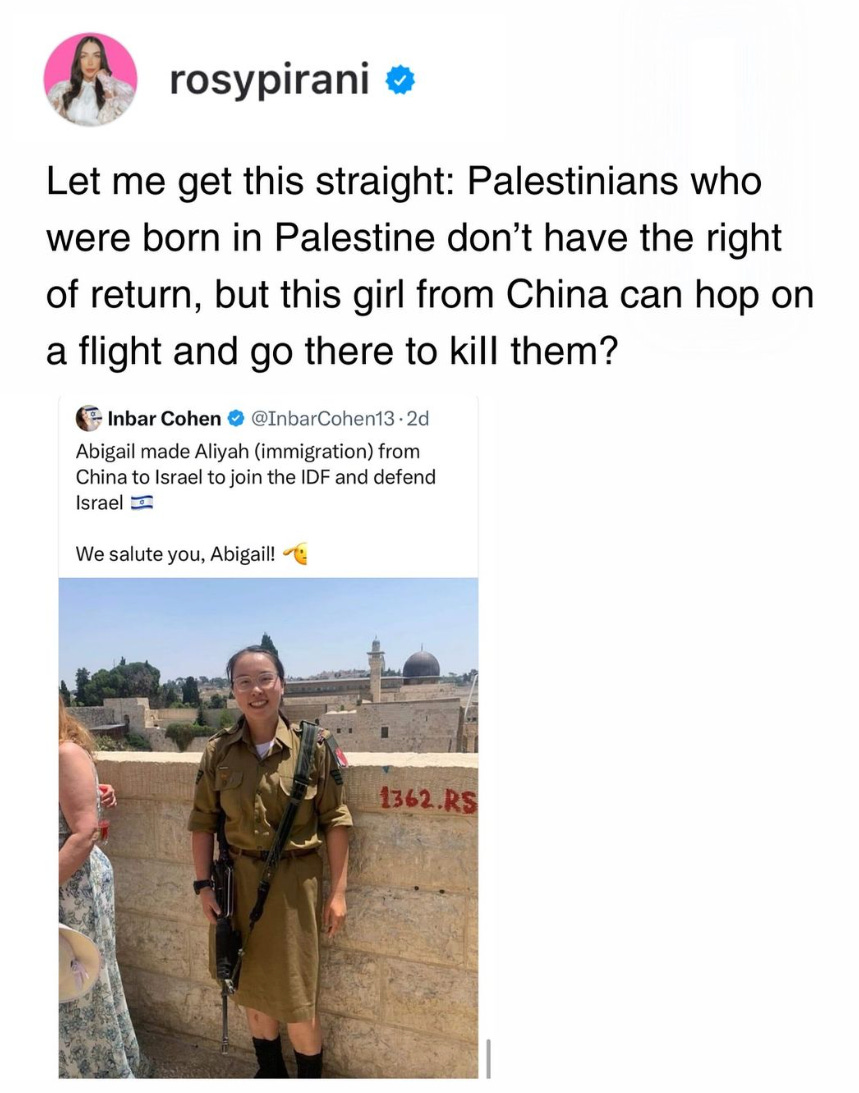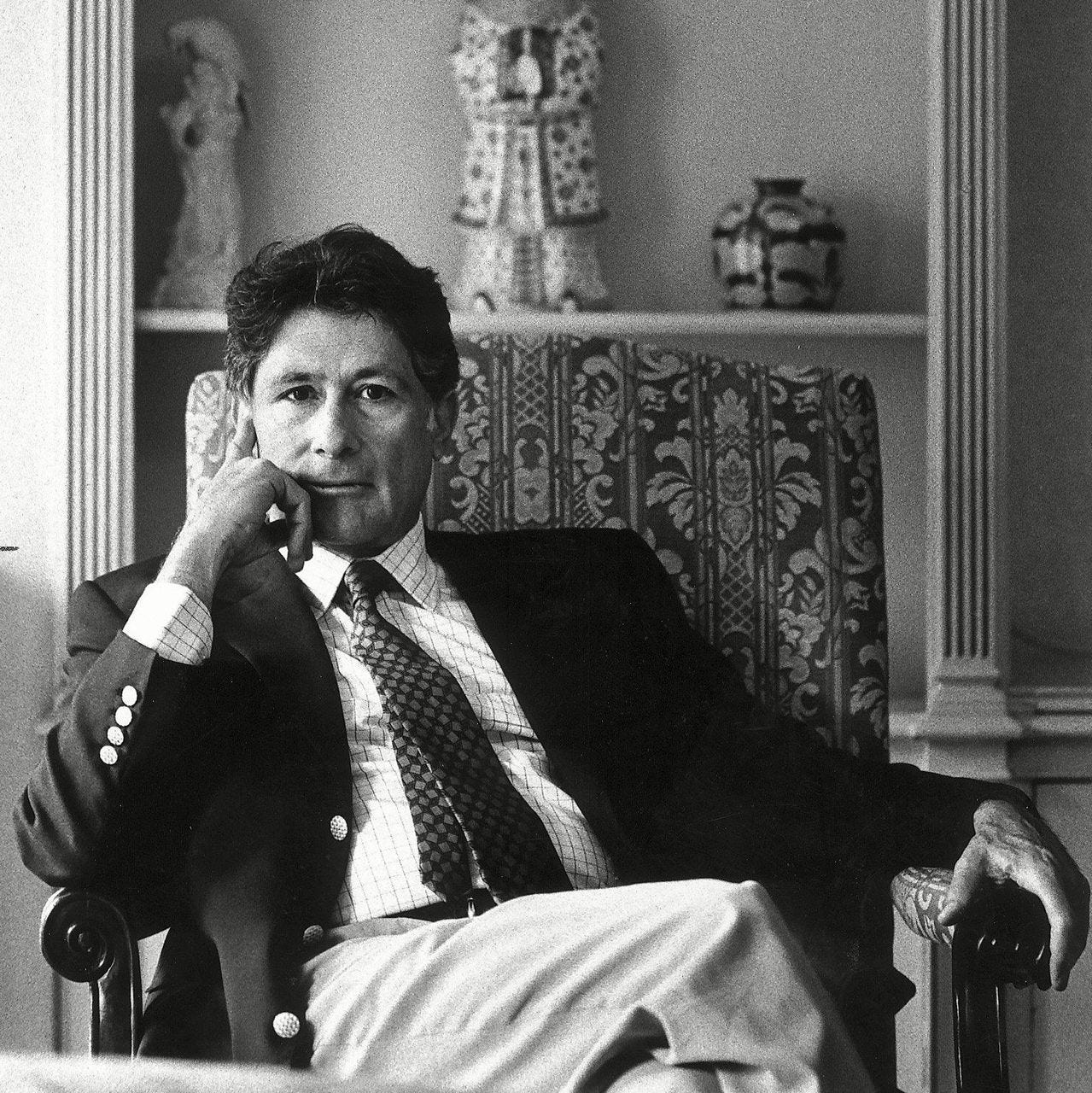Edward Said’s daughter Najla directed the above rules at the blatant misinformation from mainstream news outlets. Someone wrote in response:
So I figured today, Monday December 11, 2023, as part of the global #strikeforgaza we are asked to:
Don’t buy anything, cash or online.
Don’t use your bank account, and don’t make any transaction
Don’t leave your house
Don’t use your social media for anything other than Palestine awareness
Use hashtag #strikeforgaza
So, to help each other out, I’m providing the answers and information to Najla’s questions to the so-called experts. Hopefully, this helps the collective to have a better critical understanding of the fight against propaganda.
1. Define Zionism
It is a nationalist and political movement that supports the settler colonialist nation-state in what was Palestine, with a Western-backed regime called Israel.
Zion is a hill in Jerusalem that is symbolic of Jewish religious scripture and history.
Orthodox Judaism, which is known as Haredi Judaism, particularly within certain Hasidic groups like Satmar Hasidism, has the interpretation of the Talmud and various rabbinical writings that the Jewish people were exiled from the land of Israel by divine decree and are prohibited from returning until the prophesied return of the Messiah, an event that has not yet occurred. As such, it is considered blasphemous for individuals to assert their right to return, as this may be perceived as religious propaganda concealing underlying geopolitical motives.
One of the primary sources for this view is the writings of Rabbi Joel Teitelbaum, the founder of the Satmar Hasidic dynasty. In his book "VaYoel Moshe," Rabbi Teitelbaum argues that establishing a Jewish state before the arrival of the Messiah is forbidden according to Jewish law. He bases his argument on three oaths mentioned in the Talmud, Tractate Ketubot 111a. These oaths are interpreted as 1) The Jewish people should not ascend to Eretz Israel (the Land of Israel) as a wall (i.e., en masse and forcefully), 2) The Jewish people should not rebel against the nations, and 3) The nations should not oppress Israel excessively.
Zionism gained momentum under the leadership of Theodor Herzl, an Austro-Hungarian journalist and writer. Herzl wrote in 1896 the book Der Judenstaat, the Jewish State, as a solution to the Jewish question of European antisemitism, which advocates for Jewish emigration to Palestine (the book was published in Leipzig and Vienna and was originally titled “Address to the Rothschild” referring to the Rothschild family banking dynasty, as Herzl planned to deliver it as a speech to the Rothschild family. Baron Edmond de Rothschild rejected Herzl’s plan, feeling that it threatened Jews in the Diaspora).
What started out as an emigration project, however, transformed into a colonialization project turned genocide, as they passed on the same antisemitism that pushed the Jews out of Europe in the first place.
Zionism encompasses various ideologies but was pushed forward by the British Mandate of Palestine. Britain defeated the Ottoman Empire, and the territories in the Middle East, including Palestine, were divided among the Allied powers.
In 1917, the British government issued the Balfour Declaration, expressing support for establishing a “National Home for the Jewish People” in Palestine, which was then an Ottoman region with a majority Arab population that can be traced back to the 7th century CE with the Arab Conquest following the death of the Prophet Muhammad in 632 CE, followed by the Ottoman Era, 1517-1917 CE. After World War I, the League of Nations formally granted Britain the mandate over Palestine in 1920, which was confirmed in 1922. The League of Nations was heavily influenced by colonial powers and their interests, with many of the member states' European powers having significant colonial holdings. The League's mandate system, which was intended to administer former German and Ottoman territories until they were deemed “ready for independence,” has, in fact, been perpetuating colonialist ideologies.
After WWII, in 1948, the first “Nakba” (Arabic: النكبة), or the catastrophe, occurred. During the Arab-Israeli War, Palestinian Arabs were expelled from their homes. The numbers range from 750,000 to 900,000. 78% of Mandatory Palestine was declared as Israel, and the Zionist militias depopulated and destroyed over 500 Palestinian villages. The displacement caused an ongoing major refugee crisis. The occupation then created refugee camps in the Gaza Strip and the West Bank.
One of the more important consequences of the 1948 war was the expulsion and/or flight of some 750,000 Palestinians from their homes inside Israel, and the refusal of Israel to allow them to return, despite an express UN decision calling on it to do so. ... About 750,000 of the 900,000 strong Palestinian population were expelled, or fled, all completely terrorized and fearing for their lives
Gerber, H. (2008). Remembering and Imagining Palestine: Identity and Nationalism from the Crusades to the Present. Palgrave Macmillan UK.
The Nakba marked the handover from the British to the establishment of Israel, which has maintained the neocolonial establishment, an ongoing influence and control over the region, providing an important geopolitical stake in the region for Western Imperialism.
2. Who is Lord Balfour? Who are Sykes and Picot?
Lord Balfour, Arthur James Balfour, was a British statesman who served as Prime Minister for the United Kingdom from 1902 to 1905 and later as Foreign Secretary. He is most renowned for the Balfour Declaration. Born into a prominent British family in 1848, Balfour was a key figure in British politics in the late 19th and early 20th centuries.
Balfour issued the Balfour Declaration in the form of a letter to Lord Rothschild, a leader of the British Jewish community. The declaration stated the British government’s support for the establishment of a “National Home for the Jewish People” in Palestine, which was part of the Ottoman Empire. This declaration was significant as it represented a major political endorsement of Zionism and had far-reaching implications for the future of the Middle East.
The formation of a Zionist state in Palestine was favorable amongst antisemites in Europe, as it helped “cleanse” Europe of its Christian purity self-image. Therefore, the formulation of the Balfour Declaration and Zionism is in itself an antisemitic stance. The ongoing genocide into 2023 reinstates this structure.
Sykes and Picot
During World War I, Sir Mark Sykes and François Georges-Picot were diplomats representing Britain and France. They are known primarily for their roles in negotiating the Sykes-Picot Agreement in 1916. The agreement was a secret treaty between Britain and France, with assent from Russia and Italy, to define their mutually agreed spheres of influence and control in the Middle East in anticipation of the destruction of the Ottoman Empire after World War I. The agreement effectively divided the Arab provinces of the Ottoman Empire outside the Arabian Peninsula into areas of future British and French control of influence.
The impact of the Sykes-Picot agreement is often cited as a pivotal movement in the modern history of the Middle East, as it disregarded the wishes and aspirations of the indigenous Arab populations in these regions and set the stage for future conflicts and boundary disputes. It is also a betrayal of promises made to Arab leaders during the war, who expected to gain independence and control over their territories in return for supporting the Allies against the Ottoman Empire.
There were prevailing racial prejudices and biases within the scientific and psychological theories amongst the European colonizers that influenced much of the thinking. One ideology proposed that people of African descent were inherently inferior and thus incapable of self-governance or independence.
One prominent example of such thinking can be found in the work of G. Stanely Hall, a pioneering American psychologist who studied in Europe at the University of Berlin; he was a proponent of racial and evolutionary theories that suggested a hierarchy of races, with white Europeans at the top. He later contributed to the Eugenics Movement. His views were influenced by the social Darwinist ideas of the time, which misapplied Darwin’s theories of evolution to justify racial hierarchies and colonialism. The American Eugenics movement inspired the Nazi’s Eugenics projects, but many of the Germans viewed the American Eugenics to be too extreme compared to their own projects.
3 What are UN Resolutions 242 and 338
These were two key resolutions relating to the question of Palestine, occupied by Zionist Israel, and with the disputes between Israel and its neighboring Arab countries. These resolutions were passed following the major Arab-Israeli wars and aimed to lay down principles for peace and the withdrawal of Israeli forces from occupied territories.
It was adopted on November 22, 1967, following the Six-Day War, Resolution 242 and is one of the most commonly referenced UN resolutions regarding the Israeli-Palestinian conflict. This resolution introduced the principle of "land for peace," which suggests Israeli withdrawal from territories occupied during the 1967 war in exchange for peace with the Arab world.
This resolution implied a process of negotiation between the involved parties and formed the foundation for resolving the conflict for many years. Initially, there was Palestinian opposition to the resolution, and some Israeli supporters claimed it did not mandate a total Israeli withdrawal from the occupied territories.
The resolution, drafted primarily by British diplomat Lord Caradon and passed unanimously, emphasized that “it is unthinkable that there should be a barrier on the Jordan between one side and the other, in their view and in mine.” It specifically called for Israeli forces to withdraw from occupied territories and for the termination of belligerent claims, acknowledging the sovereignty and political independence of every state in the area.
However, the resolution's wording, particularly regarding the extent of Israeli withdrawal, was intentionally vague and open to interpretation. This ambiguity led to differing interpretations, with some Israeli supporters arguing that it does not require a complete withdrawal from all occupied territories. In contrast, others, noting the French version's article, interpreted it as calling for withdrawal from all occupied territories.
Retrait des forces armées israéliennes des territoires occupés lors du récent conflit.
Despite these contentions, the resolution was crucial in subsequent peace negotiations. The Palestine Liberation Organization (PLO) initially rejected the resolution but later accepted it in 1988, agreeing to use it as a basis for negotiations.
Over the years, the implementation of Resolution 242 has remained incomplete, particularly concerning the Palestinian and Syrian fronts. The PLO has been advocating for negotiations based on pre-1967 lines. Despite Israel’s official acceptance, its actions have proven otherwise, such as annexing Jerusalem and building settlements in the occupied territories. The resolution thus remains unresolved.
It was adopted on October 22, 1973, in the wake of the Yom Kippur War or the October War. The war took place in the Sinai Peninsula and the Golan Heights, both of which had been occupied by Israel since 1967, despite the calls for peace from UN Resolution 242, as mentioned previously. The war was between a coalition of Arab states led by Egypt and Syria, fighting against the ongoing illegal occupation of Israel despite the resolution. The war became a proxy war between the United States and the Soviet Union, which supplied arms to both sides.
There was a failure of diplomacy, as the diplomatic resolutions stalled. There was an absence of space agreement following the Six-Day War, and the continued occupation of Arab territories by Israel fueled tensions.
4. Explain the laws of citizenship in Israel for European Jews, Sephardic and Mizrahi Jews, Palestinians with Israeli citizenship, and Gaza and the West Bank. Discuss Jerusalem and license plates in detail.
Law of Return 1950, or the citizenship law for Isreal
This law allows any Jews from anywhere in the world, including Ashkenazi (Jewish diaspora emerging from the Holy Roman Empire around the end of the first millennium CE), Sephardic (Jewish diaspora population associated with the Iberian Peninsula, as in Spain and Portugal. It can also refer to the Jews of the Middle East and North Africa), and Mizrahi Jews (descendants of Jews in the Middle East, North Africa and Central Asia and parts of the Caucasus, who lived for many generations under Muslim rule during the Middle Ages), to immigrate to Israel and become an Israeli citizens. This right extends to people with at least one Jewish grandparent and converts to Judaism.
This is the move of settler colonialism, similar to how Han Chinese people pushed out Uyghurs in Xinjiang with an influx of Eastern Han people. The same strategy was employed with the settler colonialist project from Europe to Turtle Island (North America) and Australia. However, discrepancies in immigration laws reveal prejudice and injustices in Israel.
Palestinians who remained within the borders of the states of Isreal after its establishment in 1948 and their descendants are Israeli citizens. They have the right to vote, hold public office, and have access to Israeli public services, but in practice, this is not the case.
Veiled by the excuse of security considerations, it often takes precedence over civil rights, particularly affecting the Arab population. Despite being a democratic nation, it gives precedence to Judaism over fundamental democratic rights, leading to policies and practices that are discriminatory. So despite Palestinians, who are native to the land and are citizens, they receive unequal treatment compared to even newly emigrated Jews.
Discriminations are evident, and censorship is enforced. One example is Abou Shhadeh, fired from her job for sharing a clip on social media about a historical event related to the Palestinian experience, highlighting the challenges faced in expressing Palestinian identity or political opinions.
"This is all absurd. We are not talking about feelings that are hurt," says Sawsan Zaher, a human rights lawyer based in Haifa, Israel. "We are talking about a massive wave of political persecution against Arab citizens inside of Israel."
Residents of Gaza and the West Bank
Gaza residents are not eligible for Israeli citizenship. Palestinians in the West Bank are not citizens and live under varying degrees of Palestinian and Israeli control. In Jerusalem, the Palestinians in East Jerusalem are permanent residents of Israel but not citizens. They can apply for citizenship, though the process can be complex, and many choose not to apply, not recognizing Israeli sovereignty over East Jerusalem.
License plates of Israel vs. Gaza vs. West Bank
Israeli vehicles typically have yellow license plates, while Palestinian vehicles from the West Bank have green or white plates. This makes it easy to see from afar whether a vehicle is carrying Palestinians or Israelis. The Israeli army uses this to monitor which kind of person is using which road and to determine which cars to pull over. Vehicles with Palestinian plates have limited access to Israeli territory and are subjugated to checkpoints for daily work and life.
5. Why did Oslo fail?
The Oslo Accords were intended as interim arrangements and became the next installment of failed resolutions. But key issues like Jerusalem’s status, Palestinian refugees, Israeli settlements, and final borders were deferred. The postponement left crucial and contentious matters unresolved. The agreements contained ambiguities and lacked clear implementation mechanisms, leading to different interpretations and expectations.
Meanwhile, the Israeli settlements expanded into the occupied territories, which undermined the accords for the Palestinians and hindered the feasibility of peaceful Palestinian existence. This pushed the Palestinians to fight back, and the Israelis labeled them as terrorists and justified expansionism against the “human animals.”
On November 4, 1995, gunman Yigal Amir, a Jewish Israeli student, was apprehended for the assassination of Israeli Prime Minister Yitzhak Rabin, who played a pivotal role in the peace process. In Israel, the accords faced opposition from right-wing and religious factions who were against ceding control of any part of what they considered the historic land of Israel. Yigal Amir was influenced by this extreme opposition and decided to take matters into his own hands. The assassination of Yitzhak Rabin gave rise to many unresolved conspiracies.
6 Who was Edward Said, Ghassan Kanafani, Naji Al Ali, Rashid Khalidi, Ilan Pappe, Avi Schlaim, Gideon Levy, Amira Hass. Name 4 more people for extra credit.
He was an influential Palestinian-American scholar. He is best known for his work Orientalism (1978), which critically analyzed the Western cultural perspective of the East. He was a professor of English and Comparative literature at Columbia University and a vocal advocate for Palestinian rights.
A Palestinian writer and leading member of the Popular Front for the Liberation of Palestine. He is known for his short novels, short stories, and plays that often center on the Palestinian struggle. He was the author of “The Land of Sad Oranges.” He was assassinated in Beirut in 1972 by the Mossad.
a Palestinian cartoonist noted for his political commentary through his artwork. He created Handala, a character that has become an icon of Palestinian identity and defiance. He was assassinated in London in 1987.
An American Palestinian historian of the Middle East, Khalidi is the Edward Said Professor of Modern Arab Studies at Columbia University. He has written extensively on the history of the politics of the Middle East, particularly on Palestinian issues. He is the author of “The Hundred Years' War on Palestine: A History of Settler-Colonial Conquest and Resistance, 1917-2017”
He is an Israeli historian and social activist known for his pro-Palestinian advocacy and interpretation of Israeli history. He is a professor at the College of Social Sciences and International Studies at the University of Exeter. He is the author of “The Ethnic Cleansing of Palestine.”
An Isreali British historian, Shlaim is one of Iraeli’s New Historians, known for his critical re-evaulation fo Israeli’s history and its role in the Arab Israeli conflict. He is an emeritus (retired but allowed to retain title) professor of International Relations at the University of Oxford. He is the author of “The Iron Wall: Israel and the Arab World.”
An Israeli jounalist and author, known for his critical columns in the Israeli newspaper Haaretz. Levy’s work focuses on the Israeli occupation of Palestinian territories.
An Israeli journalist and author, Hass is known for her colum in Haaretz, particularly her reporting on Palestinian affairs in the West Bank and Gaza. She is one of the few jouranlists who have lived in and reported from the Palestinian territories.
Born in 1925, in Jerusalem, is a prominent Palestinian historian, known for his scholarly extensive work on the history of Palestine. He contributed to the resarch on the Nakba, and the documentation of the refugee crisis. He is the founding member of the Institute for Palestine Studies. He has published several influential books and articles, preserving the Palestinian heritage.
—
Additional Credit:
A respected PAlestinian Canadian doctor known for her humanitarian work. Loubani has been inovleved in medical relief efforts in Gaza and has actively spoken about the healthcare problems in Gaza.
A member of the Popular Front for the Liberation of Palestine. Khaled is known for her involvement in aircraft hijackings in 1969 and 1970. She is one of the most famous women in the Palestinian resistance movement and has become iconic.
She was part of the hijacking of flight TWA flight 940 from Rome to Tel Aviv, where no one was injured, and the hijackers were eventually given passage to Syria. Khaled was released without facing long-term imprisonment. She took part in the attempted hijacking of El Al Flight 219 from Amsterdam to New York. The hijacking was foiled, and British authorities arrested her in London after the plane landed there. She was released in exchange for hostages from another hijacking incident.
After no longer participating in militant activities, she became a member of the Palestinian National Council and continues to be a voice in politics and advocacy. She lives in Jordan and has traveled internationally to speak about the Palestinian cause.
A Palestinian lawyer and writer, he is well known for his legal and literary work, particularly in his books on the Israeli occupation, human rights, and the Palestinian experience. He is the author of “Palestinian Walks: Forays into a Vanishing Landscape.”
A distinguished Palestinian leader, legislator, activist, and scholar, Ashrawi has been a prominent spokesperson for Palestinian affairs for decades and has served in various capacities in the Palestinian government and in international forums. She is the author of “This Side of Peace: A Personal Account.”
Norman Gary Finkeltsein, is an American political scientist and activist. He has dedicated four decades to the research of Holocaust and Palestine. His book, “The Holocaust Industry,” reveals how some exploit the memory of the Holocaust as an “ideological weapon” to provide Israel immunity to criticism.
Lara Sheehi and Stephen Sheehi
They are co-authors of Psychoanalysis Under Occupation, Practicing Resistance in Palestine, a book that platforms the perspectives and insights of the Palestinian people through engaging theories of decoloniality and liberatory psychoanalysis.
7. What are Judea and Samaria, and who refers to them as such and why?
Judea and Samaria are now known as the West Bank—a landlocked territory near the Mediterranean coast of Western Asia.
Judea was the name of a southern kingdom centered around Jerusalem, and Samaria was the name of the northern kingdom. Both were part of ancient Jewish history.
Israeli governments and supporters use the terms Judea and Samaria in the West Bank. It’s rooted in historical Jewish connections, emphasizing the Jewish historical and religious claims to this land.
Today, Judea and Samaria is a politically loaded term associated with Israeli right-wing nationalist and conservative viewpoints that support Jewish settlements in the area and oppose the establishment of a Palestinian state.
West Bank is commonly used in international discourse, after the United Nations and other international communities. The name originated after the 1948 Arab–Israeli War when Jordan annexed the area west of the Jordan River, thus the West Bank of the river.
During 1967, the Six-Day War, Israel captured the West Bank from Jordan. Since then, the West Bank has been under Israeli military occupation.
Jordan disengaged in 1988 for claims in favor of the PLO as the representative of the Palestinian people.
Judea (Yehuda) was named after one of the twelve tribes of Israel—the tribe of Judah. This kingdom existed after the United Kingdom of Israel split into two: the Kindom of Isreal in the north and the Kingdom of Judah in the south. The timeline of the United Kingdom of Israel, started by Saul, the first king, was considered to have reigned in the late 11th century BCE, and later David and Solomon. The Kingdom split after King Solomon’s death in 930 BCE is subject to scholarly debate.
Samaria, the name comes from the Hebrew Shomron (שומרון), which was originally the name of a city that was the capital of the Kingdom of Israel after the split. The name was believed to be derived from the individual Shemer, from whom King Omri of Israel purchased the hill for two talents of silver, on which he built the city in the 9th century BCE, according to the Hebrew Bible, in the First Book of Kings,
"And he bought the hill Samaria of Shemer for two talents of silver, and built on the hill, and called the name of the city which he built, after the name of Shemer, owner of the hill, Samaria." —1 Kings 16:24
Before the Balfour Declaration of 1917, there were no specific administrative divisions under the Ottoman Empire's rule in the region known as Judea and Samaria, or the West Bank. It was designated into territories of administrative units called vilayets and sanjaks. It was part of the Jerusalem Sanjak (Mutasarrifate) administrative, which included Jerusalem and its surrounding areas. It was governed by the Ottoman capital, Constantinople, modern-day Istanbul, because of the city’s religious significance. It was part of a larger administrative unit and often referred to by the names of its major cities like Jerusalem, Nablus, and Hebron.
To reiterate, today, Judea and Samaria are politically loaded names used by right-wing Zionists to make claims to assert Jewish historical sovereignty based on ancient texts despite international agreements and laws.
8. What is the Nakba, and where does the term come from (cite work and author)
The Nakba, in Arabic, النكبة, means “catastrophe” or “disaster,” which refers to the events surrounding the 1948 Arab-Israeli War, focusing on the mass displacement and exodus of Palestinian Arabs from what became the State of Israel during and following the conflict. The term encapsulates the profound loss and trauma experienced by the Palestinian people as a result of these events.
The term was popularized by the Palestinian historian Walid Khalidi. Khalidi, a key figure in Palestinian studies, used the term extensively in his works to describe the 1948 events and their impact on the Palestinian Arab population.
The use of Nakba to describe these events emphasizes the perspective of loss and dispossession experienced by Palestinians. It underscores the catastrophic uprooting and the beginning of a long-standing refugee crisis.
It coincides with the creation of the State of Israel, established on May 14, 1948. It celebrates today as Independence Day in Israel, but is remembered as the Nakba for Palestinians.
Many Palestinian villages were destroyed, and they became refugees in neighboring Arab countries, the West Bank, and the Gaza Strip.
The long-term impact of the Nakba is the central element and is annually commemorated on May 15th, known as Nakba Day.
9. Additoinal questions. Why do so many people stand in solidarity with Palestine, particularly those fighting against settler colonialism?
The fight against settler colonialism is rooted in several factors. There are historical parallels between the colonizers and the colonized. These include, but are not limited to, Native Americans in the United States, Aboriginal Australians, Maoris in New Zealand, Tibetans in China, the Sahrawi People of Western Sahara, Indigenous peoples in Canada, Kurdish people in the Middle East, and Tamils in Sri Lanka. The Uyghurs in Xinjiang, China; the Basque Country in Spain and France; the Rohingya in Myanmar; the Chechens in Russia; the Scots in the United Kingdom; Kashmiris in India and Pakistan; the People of East Timor.
Another common struggle is the understanding of the displacement of people from their territories and crimes against humanity. There have been countless reports of human rights violations in the occupied territories relating to living conditions, freedom of movement, and violent confrontations. Israel’s policies in the occupied territories have violated countless laws, including United Nations resolutions.
The Palestinian struggle is part of the larger fight against imperialism, human rights, and social justice.
—
This is by no means a definitive list, but hopefully, it is a starting point to satisfy your curiosity to dig deeper and to help stand in solidarity within a global humanitarian community. Critical thinking is a crucial guard against occupation and colonialism. Hatred and violence have not been the ‘norm,’ and it is not the only future that we can imagine for ourselves and our children.
From the River to the Sea, we shall all be free.
























